Industrial flood lights are essential for illuminating large workspaces effectively. These powerful lighting solutions provide the brightness and coverage needed for safety, productivity, and efficiency in various industrial settings.
At PacLights, we understand the critical role that high-quality lighting plays in optimizing work environments. This blog post will explore the brightest industrial flood lights available and help you make an informed decision for your workspace illumination needs.
Understanding Industrial Flood Lights
What Are Industrial Flood Lights?
Industrial flood lights are powerful lighting fixtures that illuminate large areas with intense, broad beams of light. These robust lighting solutions play a vital role in various industrial settings, including warehouses, manufacturing plants, construction sites, and outdoor work areas.
The Purpose of Industrial Flood Lights
The primary purpose of industrial flood lights is to provide optimal visibility in expansive spaces where standard lighting fixtures fall short. These high-output lights ensure safety, enhance productivity, and improve overall working conditions in industrial environments.
Temporary lighting increases construction site safety and security while reducing the risk of injuries and fatalities, according to the Illuminating Engineering Society.
Key Features of High-Quality Flood Lights
When selecting industrial flood lights, several key features should be considered:
- Lumen Output: The brightness of a flood light is measured in lumens. For industrial applications, fixtures that offer at least 10,000 lumens for smaller areas and up to 100,000 lumens for larger spaces are recommended.
- Energy Efficiency: LED flood lights are the most energy-efficient option, consuming up to 75% less energy than traditional metal halide fixtures. This translates to significant cost savings over time.
- Color Temperature: The color temperature should suit your specific needs. Cooler temperatures (5000K-6500K) are ideal for task-oriented areas, while warmer temperatures (2700K-4000K) work well for general lighting.
- Durability: Industrial flood lights should have robust construction, typically with an IP65 or higher rating for dust and water resistance. This ensures longevity and reliability in harsh industrial environments.
- Beam Angle: The beam angle determines the spread of light. Wide-angle beams (120°-180°) are suitable for general area lighting, while narrower beams (15°-60°) are better for focused illumination.
The Importance of Brightness in Industrial Settings
Adequate brightness is essential in industrial settings for several reasons:
- Safety: Proper illumination reduces the risk of accidents and injuries by ensuring that potential hazards are clearly visible.
- Productivity: Well-lit workspaces contribute to increased efficiency and accuracy in tasks, leading to higher productivity levels.
- Quality Control: Bright, uniform lighting is necessary for detecting defects and maintaining high-quality standards in manufacturing processes.
- Employee Well-being: Good lighting reduces eye strain and fatigue, contributing to better overall health and job satisfaction among workers.
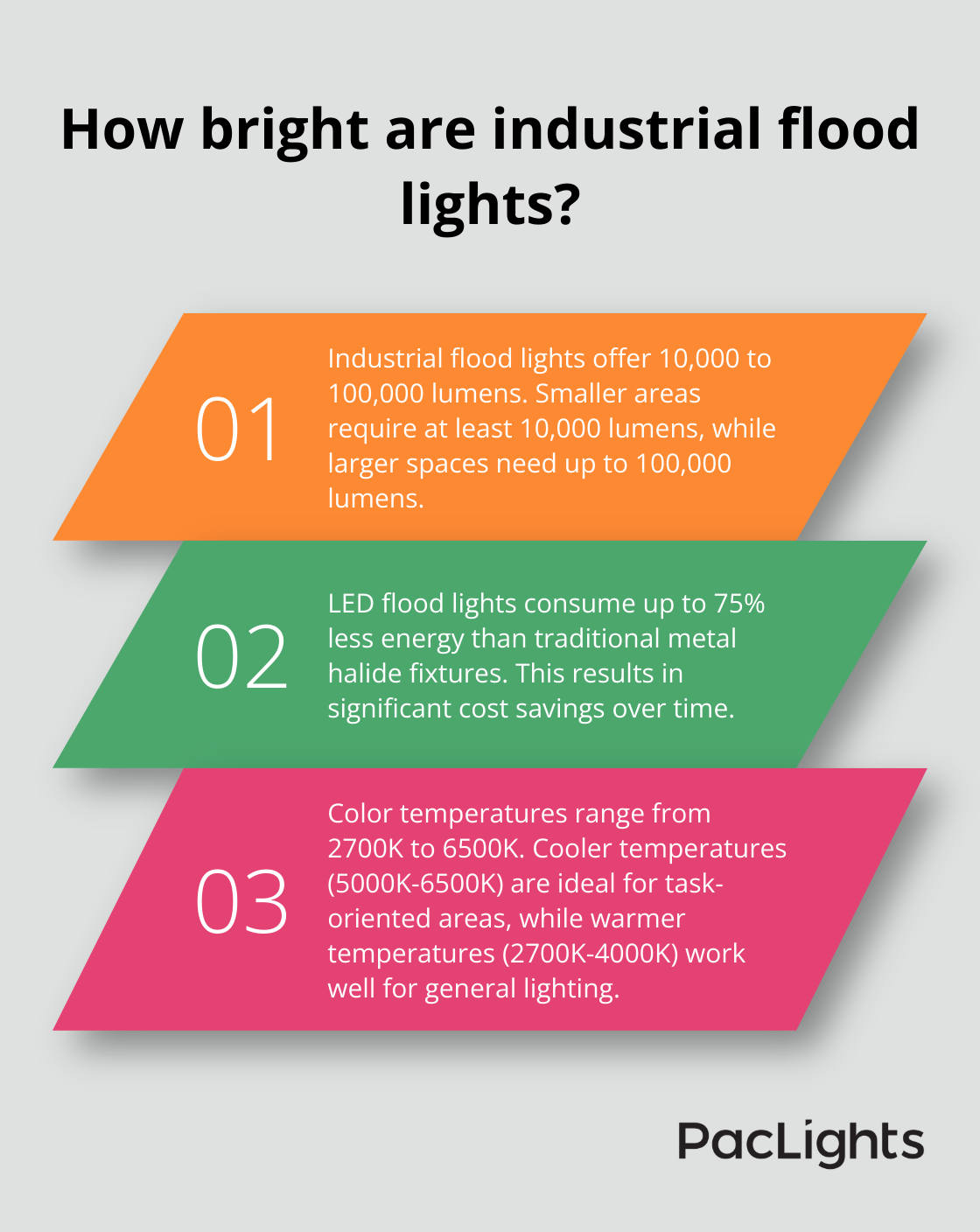
When selecting industrial flood lights, it’s important to conduct a thorough lighting assessment of your workspace. This will help determine the optimal lumen output and placement of fixtures to achieve uniform illumination across the entire area.
As we explore the brightest industrial flood lights available in the market, it’s important to consider how these features and benefits align with your specific workspace requirements. In the next section, we’ll examine some of the top performers in the industry and compare their capabilities to help you make an informed decision.
Brightest Industrial Flood Lights on the Market
Leading the Pack: Ultra-Bright LED Flood Lights
The industrial lighting market offers a range of high-performance flood lights designed to illuminate large spaces effectively. Among these, ultra-bright LED flood lights stand out for their exceptional lumen output and energy efficiency. These fixtures provide optimal visibility across expansive workspaces, which enhances safety and productivity.
Comparing Industry Giants
Several brands compete in the industrial lighting sector, including PacLights, Keystone, and Satco. PacLights consistently outperforms competitors in terms of brightness and efficiency.
Lumen Output and Efficiency Ratings
The efficiency of LED flood lights is measured in lumens per watt (lm/W). High-quality industrial flood lights typically achieve 130-150 lm/W. The most efficient models in the market boast ratings at the higher end of this spectrum, which ensures maximum light output with minimal energy consumption.
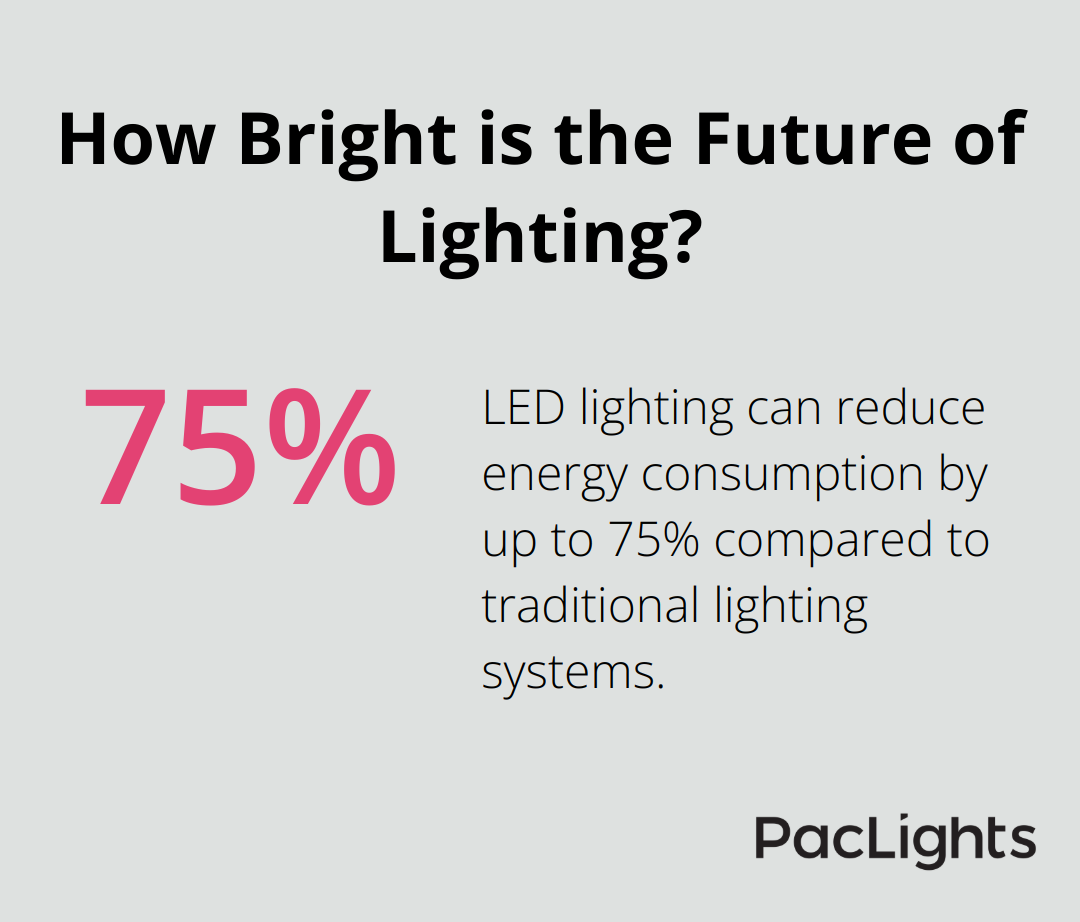
A study by the U.S. Department of Energy found that LED lighting can reduce energy consumption by up to 75% compared to traditional lighting systems. This reduction translates to significant cost savings over time, making LED flood lights a smart investment for industrial facilities.
Customization Options
Modern industrial flood lights often offer selectable color temperature options (typically ranging from 3000K to 5000K). This feature allows facilities to tailor the lighting to their specific needs. Cooler temperatures (5000K) work best for task-oriented areas requiring high visibility, while warmer temperatures (3000K-4000K) can create a more comfortable ambiance in general work areas.
Versatile Mounting Solutions
Industrial spaces vary greatly in size and layout. Therefore, it’s important to choose flood lights that adapt easily to different mounting configurations. The best fixtures offer multiple mounting options (such as slip fitter mounts and adjustable pole mounts) to ensure versatility in installation.
As we move forward, it’s essential to consider how these features align with your specific workspace requirements. The next section will explore the key factors to evaluate when selecting bright industrial flood lights for your facility.
How to Choose the Right Industrial Flood Lights
Assess Your Space and Lighting Needs
Before you purchase industrial flood lights, conduct a thorough assessment of your workspace. Measure the area that needs illumination and identify any specific lighting challenges (such as high ceilings or obstructions). A 100,000 square foot warehouse typically requires between 30 and 50 foot-candles of illumination, according to the Illuminating Engineering Society (IES) standards.
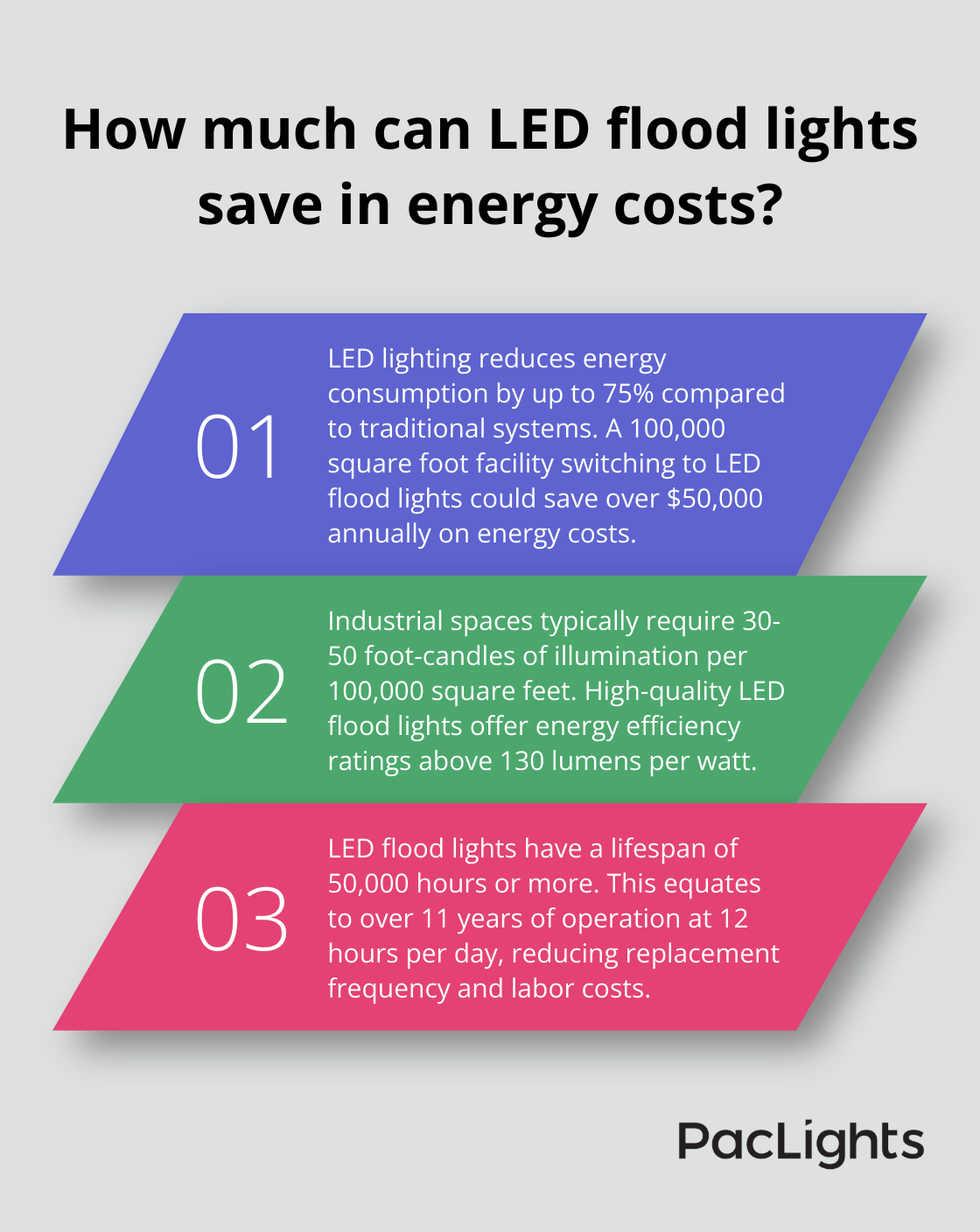
Determine the primary purpose of your lighting. Task-oriented areas may require higher light levels, while general illumination can be achieved with lower output fixtures. Create a lighting plan that accounts for both ambient and task lighting needs.
Maximize Energy Efficiency
Energy efficiency is a key factor in selecting industrial flood lights. LED technology has revolutionized industrial lighting, offering significant energy savings compared to traditional options. Look for fixtures with high lumens per watt ratings, typically above 130 lm/W for top-tier performance.
The Department of Energy reports that LED lighting can reduce energy consumption by up to 75% compared to traditional systems. This translates to substantial cost savings over time. A 100,000 square foot facility that switches from metal halide to LED flood lights could save upwards of $50,000 annually on energy costs alone.
Ensure Durability and Weather Resistance
Industrial environments often expose lighting fixtures to harsh conditions, including dust, moisture, and temperature fluctuations. Choose flood lights with robust construction and high IP (Ingress Protection) ratings. An IP65 rating or higher ensures protection against dust and water jets, making the fixtures suitable for both indoor and outdoor applications.
Consider the operating temperature range of the fixtures. Quality LED flood lights should perform well in temperatures ranging from -40°F to 120°F (-40°C to 49°C), ensuring reliable operation in various climates.
Simplify Installation and Maintenance
The ease of installation and ongoing maintenance requirements can significantly impact the total cost of ownership for your lighting system. Select flood lights with versatile mounting options, such as adjustable yokes or slip fitter mounts, to simplify installation in various settings.
LED flood lights typically require less maintenance than traditional lighting options due to their longer lifespan. Many high-quality LED fixtures boast a lifespan of 50,000 hours or more, which can translate to over 11 years of operation at 12 hours per day. This extended lifespan reduces the frequency of replacements and associated labor costs.
When you evaluate flood light options, look for fixtures with modular designs that allow for easy component replacement. This feature can significantly reduce downtime and maintenance costs over the life of the system.
The selection of appropriate industrial flood lights plays a vital role in creating safe and productive workspaces. High-quality illumination enhances visibility, reduces accidents, and improves operational efficiency in industrial settings. PacLights offers a comprehensive range of industrial lighting solutions tailored to diverse needs, focusing on energy efficiency and durability.
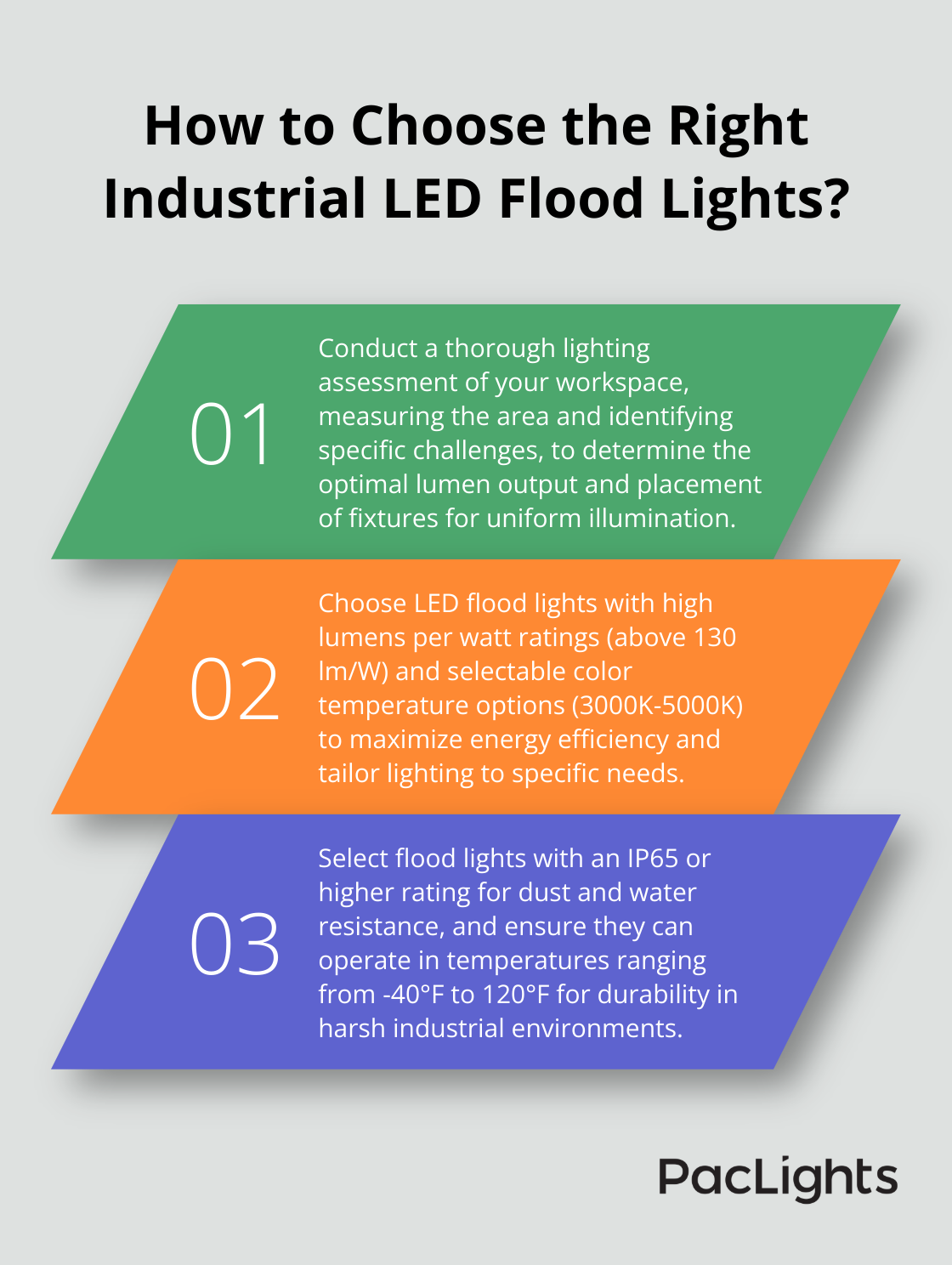
PacLights’ industrial flood lights provide exceptional brightness and customization options to meet specific workspace requirements. Their fixtures offer energy efficiency (reducing operational costs and environmental impact) and robust construction for longevity in harsh conditions. The company’s commitment to customization allows businesses to tailor lighting solutions to their unique needs.
Optimizing workspace illumination requires careful consideration of area size, task requirements, and energy efficiency goals. Advanced LED technology and smart control systems enable industrial facilities to create dynamic lighting environments that adapt to changing needs. Investing in superior industrial flood lights enhances immediate operational capabilities and positions businesses for long-term success.


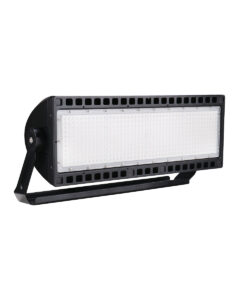
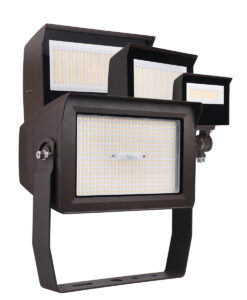
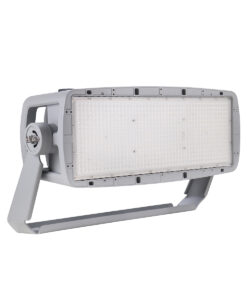
Disclaimer: PacLights is not responsible for any actions taken based on the suggestions and information provided in this article, and readers should consult local building and electrical codes for proper guidance.